Sarah Ash's Blog, page 4
November 17, 2020
The Arkhel Conundrum reviewed by Nick Borelli in Out Of This World SFF Reviews
When I embarked upon Book 4, the sequel to The Tears of Artamon, I knew I would have to be very careful to try to preserve the essence of the original trilogy, the world it’s set in, and above all the people therein, so as not to disappoint the readers who were kind enough to tell me they’d enjoyed the books and wanted more. And that’s why I’m so pleased (and relieved) to receive this lovely review from Nick Borelli (on his SFF Blog Out Of This World) because he knows The Tears of Artamon well. It’s always such a wonderful surprise to read an appreciative review – and especially, as in this case, one from a book blogger and reviewer who is very familiar with the characters and the world they inhabit. Thank you, Nick! (And now I really have no excuse not to get on with writing Book 5…)
Please Feel Free to Share:






October 19, 2020
Relationships with myth, old and new – Juliet E McKenna
Recently I’ve revisited myths that I haven’t thought about since I was a kid. That’s when I was working my way through school and local library shelves where folklore, fantasy and history were intermingled and often overlapped. Going back to these books and stories is one of the most rewarding aspects of writing my current contemporary fantasy series, where Dan Mackmain’s life is complicated by encounters with the supernatural, where the Green Man may or may not lend a hand.
So I’ve been thinking about our relationships with myth. At the most fundamental level, these stories are an attempt to make sense of the world around us. It’s a universal human impulse. Every culture as far back as we know has had gods and goddesses of thunder, of the harvest, of love, death and far, far more. Myths tell of interactions between humanity and the divine, often validating rituals to give thanks, to seek favour or avert disaster. On a more personal, more local level, tales of supernatural dangers lurking in woods and ponds have warned countless generations of children against straying into peril. Over time, these stories have been retold and reworked to reflect different times and concerns, as we see in the ceaseless retellings of Robin Hood and King Arthur up to and including modern film and TV.
This tells me any convincing secondary world in fantasy fiction will need its own myths. However simply appropriating an existing collection of such stories will rarely, if ever, succeed. Instead, fantasy authors need to take a good, long look at the folk tales we know, and their origins. We must analyse the relationships between these stories and the people who have told them, as well as with the lands where they live. Folklore is always deeply rooted in the lands where the people whose culture it is part of live; in what they long for and what they fear. Northern worlds of the dead are cold and dark while hells in hotter climates are lands of inescapable heat and searing thirst. The realm of the blessed is over the sea for those who live on the coast. Monsters lurk in the mountains for those who live in the valleys.
Add to that, folk tales rarely offer a fully-fledged plot, and those that do, such as famous ballads, are so well-known that it’s very hard indeed for an author to do anything sufficiently novel to be worthwhile. It’s not impossible, of course. We can all think of writers who’ve succeeded in bringing something new to Tam Lin – but they are few and far between. The far greater value of myths as a resource for a writer is the creatures and incidents they offer as a spur to the imagination. We can take these strands and weave something new that at the same time, offers the archetypes and other familiar elements that a reader can connect with. Two writers who do this with outstanding success are Alan Garner and Terry Pratchett.
Crucially, both Garner and Pratchett understand the uncompromising nature of myth. The more we look beyond the Disneyfication of folklore, the more we will encounter harsh, even horrifying stories. Take a look at the original Brothers Grimm, and it’s clear it’s a grave mistake to think of fairy tales as pretty stories for children. We have the Victorians to thank for this prejudice, by and large, as they sought to explain the world through science and rational means, disdaining ‘superstition’. Fairies and other supernatural creatures were downsized and sanitized, and the foundational role of these stories in great works of literature from Aeschylus to Shakespeare, and through to the modern day has been erased. We need to guard against this misconception, and not just to save fantasy writers from that well-meant but infuriating question, “have you ever thought about writing a book for adults?”
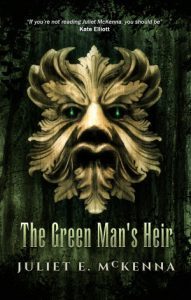
Alas, a great many myths have been lost, not least thanks to this prejudice. Modern conceptions of the Green Man, of Herne the Hunter, and of the Maiden, the Mother and the Crone don’t go back nearly as far as you might think. That we have these ideas and other local stories at all is often thanks to Victorian and Edwardian folklorists who realised that stories that were no longer retold would be lost if they weren’t recorded. This fading away of fable is still going on. If like me, you’re in your fifties, you’ll know what I mean if I mention “the Marie Celeste”. Go and ask a teen or twenty-something. You’ll get blank looks from most of that generation.
Folklore isn’t something settled and static. Figures like the Green Man, Herne the Hunter, and various personifications of the Moon as goddess frequently feature in modern paganism. These new belief systems and evolving practises stem from the same universal impulse as those very first myths our heritage of story began with: the wish to make sense of this universe, our place within it, and our relationship with the intangible. This may be of no interest or relevance to you personally, but please don’t think it means we can safely dismiss an understanding of folklore as a fringe or an academic pursuit.
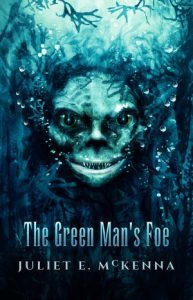
We need to be aware that modern mythmaking is also going on around us on social media these days. This enduring and universal urge to make sense of the world can make people susceptible to conspiracy theories. When people with malicious or selfish intent craft their interpretations of current events and politics with an understanding of the ways in which stories work, they can manipulate public opinion with worrying ease and worse results. Take a look at politics in the UK and the US and it’s not hard to see how urban myths, partisan versions of history, and toxic takes on ‘what everybody knows’ have been used and abused to skew election outcomes.
So it shouldn’t come as any surprise to find that learning to look below the surface of what you’ve been told is emerging as a theme in a lot of current fantasy and science fiction. Who better to unpick the uses and abuses of stories than those who create them? Who better to find ways to push back at cynical misinformation that those used to reading between the lines? As readers and writers alike, we are playing our part in this ever-evolving relationship with myth.
Juliet E McKenna is a British fantasy author living in the Cotswolds, UK. Loving history, myth and other worlds since she first learned to read, she has written fifteen epic fantasy novels so far. Her debut, The Thief’s Gamble, began The Tales of Einarinn in 1999, followed by The Aldabreshin Compass sequence, The Chronicles of the Lescari Revolution and The Hadrumal Crisis trilogies. In association with Wizard’s Tower Press, she’s re-issued her early backlist as well as publishing original short story collections and contemporary fantasy novels rooted in British folklore. The series so far is The Green Man’s Heir, The Green Man’s Foe and The Green Man’s Silence. She writes diverse shorter fiction, enjoying forays into dark fantasy, steampunk and SF.
Visit julietemckenna.com or follow @JulietEMcKenna on Twitter.
Please Feel Free to Share:






October 17, 2020
Juliet E. McKenna visits the Guest Blog on Monday to talk about myth, folklore and the Green Man
I’m delighted to welcome Juliet E. McKenna (author of The Green Man series of urban fantasies) back to the Guest Blog on 19th October! Drop by the website on Monday morning to read her fascinating post about myth, folklore and the Green Man.
Please Feel Free to Share:






September 17, 2020
And now for something completely different … love/rock/compost by Kris Jamison
I didn’t set out to write an escapist book, a comfort read of art and love, of hope and finding one’s home and family of the heart, but that’s what love/rock/compost has turned out to be. It was an accidental foray into realism, as in real life I’m predominantly an author of fairly dark secondary-world epic fantasy. However, in December of 2016 (the 24th, 6 a.m., to be precise), the characters of Lindsey and Thomas, and their story, burst full-blown into life in my mind before I’d even had my first mug of tea or got my computer turned on to start the day’s work on the book I was supposed to be writing.
Maybe the underlayers of my mind were telling me I needed a sabbatical.
So, what’s this realist comfort read about? Music, depression, gardening, the family one grows up in, the family one creates along the way… It’s the story of two millennial men in love, sorting out their journey onward together.
First there’s Lindsey, who has a Master’s degree in botany. Knocked off-kilter by a couple of family tragedies on top of a childhood of drip-by-drip psychological abuse from some of his mother’s relatives, he dropped out of his academic life without doing the doctorate everyone, including himself, expected, and has drifted down to a retail job, which he has recently lost. He’s unemployed, with no better future he can see, struggling every day to stand up straight under a weight of quiet, grey, lost-ness. But in his life he has Thomas, who is far from grey, an exuberant, generous, intense guitarist and songwriter with a large and welcoming extended family whose band is doing not so badly, all things considered, and might, if only it were 1986 rather than 2016, be making a decent living from their music. Lindsey talks to his dead brother Raleigh — who may be a ghost, or, Lindsey fears in his darker moments, a symptom of mental illness. On the good days he believes his brother’s voice is his method of coping, of giving his own common sense a voice he’ll listen to. Is Raleigh a ghost? The story doesn’t resolve that. It doesn’t need to. Whatever Raleigh is, he’s become a part of Lindsey, part of his strength.
And then there’s Thomas, nicknamed “Tank” by his siblings for his habit of rolling over anything and anyone between him and what he wants. Thomas never takes his eyes off where he’s going and sweeps those around him into his orbit, but he listens, too. Sometimes he hears even the things Lindsey can’t say. Thomas is fireworks; Lindsey is something hiding in the shadows under trees. But Lindsey knows that Thomas is also still, deep water, and Thomas says that Lindsey’s truth lies in his art, the gardens he can imagine and create — he sees beauty and brings it living into the world, calls it out of nothing, out of thought and barren earth.
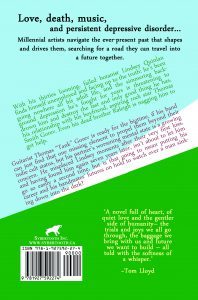
love/rock/compost is not a romance, in the genre sense, though it is quietly romantic. Lindsey and Thomas are a couple at the start; the story, which weaves past and present together, shows in its memories of the past their first encounter and how they found one another again years later. In their present they remain a couple, with friends and family close around them, weathering their storms, finding their way onward and taking strength from one another. That’s sort of the point of the story — not melodrama, but the way they find strength in seeing themselves through the love they’re given. It’s a defiance, too — artists with optimism, making a living? (Wasn’t this supposed to be realism?) Hard work, perseverance, talent… chance and luck play their role, just as in real life. It’s almost seeming like the last golden summer, now, 2016. A time before the world turned. So maybe love/rock/compost is a bit of an elegy, too, as well as a comfort read and a love story and a meditation on the power and necessity of the creative life, whatever one’s art may be. A hot golden summer, when the world could have taken another road.
About the Author
Kris Jamison was born in Kingston, Ontario, Canada, grew up just west of Kingston, and despite living in New Brunswick for much of her adult life, has limestone in her bones. Kris has been writing for only slightly fewer years than she has been reading, and as K.V. Johansen is the author of a number of critically-acclaimed works for adults, teens, and children. She also has slightly fewer guitars than Thomas Smith Gorev (which she plays rather less well).
Links to buy love/rock/compost:
Please Feel Free to Share:






August 27, 2020
A New Map for the World of Artamon!
A new map for The Tears of Artamon! Created by a very talented cartographer, Soraya Corcoran, who is also a writer of fantasy herself, so brings a very special insight into the problems of expressing in 2D a world that has imagined in 3D!
The original maps were created by Neil Gower in the noughties, commissioned by Random House/Transworld for the trilogy and then the map of Francia was commissioned by Bantam Spectra in 2008? for Tracing the Shadow, the first book of Alchymist’s Legacy (the prequel to The Tears). These maps have served their purpose very well – but now that The Arkhel Conundrum (Book 4) has been published, whole countries were not shown in the original maps: Tourmalise and Sapaudia…
You can also see all five emblematic creatures of the five countries of Artamon’s empire – as recreated in the imperial crown – each one bearing one of the imperial rubies! To find out more about the link between the ancient empire and the jewels…please read the original trilogy.
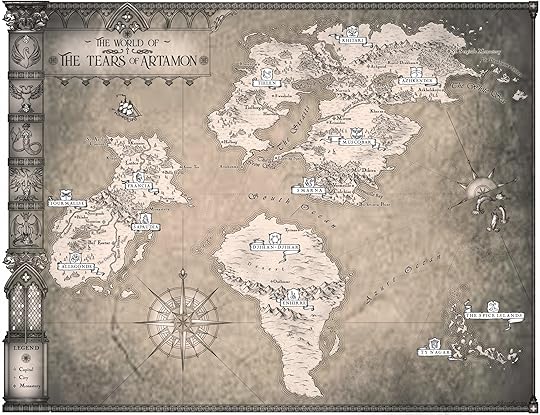
So how was the new map commissioned?
For many years now Mihir Wanchoo (Fantasy Book Critic) has done wonderful work to support SFF authors all over the world – and I’ve been very fortunate to have his support and encouragement over all these years! He’s kept The Tears of Artamon alive when it was – like so many works of fiction in this fast-moving age – dropping off readers’ radars, just because it was published in the noughties (mostly before social media became a Thing).
I have to confess that I’m not any use when it comes to map-making (as revealed in this extract from an interview I did for Bantam back in 2008) so I’m thrilled to see what a real map-maker can do!
Do you draw maps as you create your worlds? Do the maps change and expand over time, or do you try to adhere very closely to how they were originally drawn as you develop plots and characters?
‘Draw’ would be too refined a term for the illegible sketches that I scribble on odd scraps of paper while writing. I’ve been very lucky to have Neil Gower to transform my scrawls into ‘proper’ maps. But once those maps have been drawn, I can’t change them. I have to overcome the same difficulties that my characters face in traveling from, say, Francia to Azhkendir. It’s been fun writing ‘Alchymist’s Legacy’ because it meant that countries only briefly mentioned in the earlier books had to be added onto the map created for ‘The Tears of Artamon’: Allegonde and Tourmalise appeared for the first time. And (I’m no geographer, me!) that also meant I had to try to put what had been in my head for years on paper. It made me realize that my pathetic map-reading skills in the car (my poor long-suffering husband!) must be down to some genuine lack of spatial awareness on my part. I know where the city of Bel’Esstar is in relation to the mountains and the Dniera plain in Allegonde. It’s just that I can’t express it clearly in 2-D terms.
Please Feel Free to Share:






August 10, 2020
Listed Dead – Jan Edwards visits the Guest Blog to talk about her latest Bunch Courtney novel
Sarah recently asked me about the highs and lows of writing Listed Dead. Was it hard to write that tricky third book in my Bunch Courtney Investigations series? How did the experience differ from writing the previous books?
The first draft of Listed Dead was started in early 2019 so it’s quite hard to evaluate what prompted the storyline, but when I think back the writing process was a little different from all of my previous novels.
My writing process has always been a little haphazard, to tell the truth. I really wish it wasn’t, but there it is. I had always been a real seat-of-the-pants writer. I have always started a story with a small seed of an idea. A line of conversation or some snippet from a newspaper, perhaps. From that I would lay down a rough synopsis; write a few chapters; stop and look at the story; plan it out in a little more detail; write a few more chapters; get a lightbulb moment and change the synopsis; add a few more chapters; start to change it again; give myself a slap and race to the end before I got off on another tangent.
With a series, such as my Bunch Courtney novels, which has a number of main characters and an entire world already mapped out, the temptation to go off at a tangent has to be jumped on. Stopped in its tracks. Readers who follow a series invest their time in the characters and want to know all about them. It’s not just getting physical characteristics right but also their character and history. If I get those things wrong people will write and tell me!
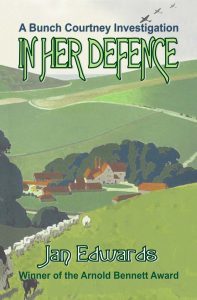
The family’s background in Listed Dead carries on from the previous book, In Her Defence, with sister Dodo (Daphne) now a mother, and the health of Bunch and Dodo’s mother, Theadora, an increasingly worrying theme. The lives of the Land Girls also feature, as do Bunch’s beloved horses. As the cover suggests, cars also have a part to play in book three as Bunch finds herself straying further from the village of Wyncombe in pursuit of her suspects.
Having set parameters for my characters is not at all bad because their histories can be plundered for themes and subplots, which makes it easier to add layers to the overall story. When you know how characters will react in difficult situations helps to keep the novel on course. I have lost count of the times that I have shouted at the TV when the main protagonist act completely out of character just to suit the plot. It is something I try very hard not to do with Courtney and Wright. I know how Rose ‘Bunch’ Courtney will react in any given situation. Occasionally events will force her into a certain course of action but always because they have to do so, not because I want them to do such-and-such a thing.
William Wright is a little more of a mystery to me and quite deliberately so. The narrative is told in third person but always through Bunch’s eyes and I don’t want her to second guess him. I don’t want to second guess him either but I have a good idea what his views will be. Really, I don’t want to know him too well.
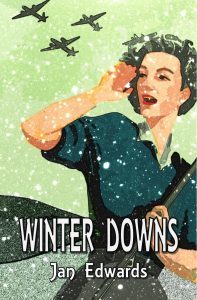
In Listed Dead Henry Marsham is re-introduced and has been mentioned as a ‘suitable young man’ for Bunch by her grandmother – in both Winter Downs and In Her Defence, but he was never actually featured. When we finally meet him in the flesh in Listed Dead Bunch is taken aback by his part in Admiralty Intelligence but instinctively understands who and what he is. Not just because she has known him for a long time but because he is a part of her world – as Wright is not.
Listed Dead is set in the autumn of 1940. Britain is under siege and the London Blitz is at its height. Utilising real places and events helps in creating a credible backdrop. For example, Bunch and Wright visit London’s Café de Paris during a raid in order to question suspects who have been evading them. I researched the café’s layout, the music and musicians and even the menus. The incident has been used in several novels over the years and history buffs will know that just a few months after Listed Dead is set the Café was gutted in a raid. By sheer fluke a bomb dropped down the air conditioning shaft. Tragically thirty-four people died, including the house-band’s leader, Snake-Hips Johnson, and some eighty more were injured.
Writing Listed Dead was a lot of fun. Even the editing had its moments. I don’t know how many volumes the series will eventually run to but right now I am working on book four, provisionally titled A Case of Murder. And I have ideas jotted down for books five and six. So I shall be living with Bunch and Wright for a few more years yet.
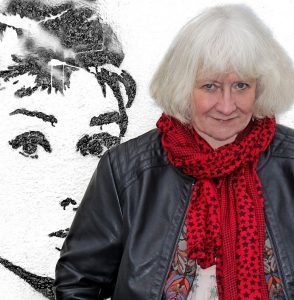
Jan Edwards is a Sussex-born writer now living in the West Midlands with her husband and obligatory cats. She was a Master Locksmith for 20 years but also tried her hand at bookselling, microfiche photography, livery stable work, motorcycle sales and market gardening. She is a practising Reiki Master. She won a Winchester Slim Volume prize and her short fiction can be found in crime, horror and fantasy anthologies in UK, US and Europe; including The Mammoth Book of Dracula and The Mammoth Book of Moriarty. Jan edits anthologies for The Alchemy Press and Fox Spirit Press, and has written for Dr Who spinoffs with Reel Time Pictures.
For further information please contact Penkhull Press.
Please Feel Free to Share:






July 16, 2020
The Fantasy Hive Spotlights Women in SFF this month!
I’m so thrilled to be taking part in this excellent initiative by The Fantasy Hive!
Every day you can read about different SFF authors and their thoughts and tips on writing and the writing process, their reading recommendations, and more besides. There’s a splendidly varied selection of writers to browse through, including Juliet E. McKenna and Stephanie Burgess, not to mention interviews with Tasha Suri, Jen Williams and Fonda Lee and many more well worth reading. Your TBR pile will probably not recover… but we wouldn’t be addicted to reading and writing if it didn’t bring us all so much pleasure. And there are so many reading pleasures to be discovered from these amazing authors!
Please Feel Free to Share:






April 28, 2020
A Small Thing for Yolanda – Jan Edwards reveals the background to her new novella!
Being asked to pinpoint where any story comes from can be tricky but in the case of A Small Thing for Yolanda there was a fairly easy trail to follow. I was first approached to write A Small Thing for Yolanda some four or five years ago. Or perhaps I should be more precise to say I was commissioned to write a novella for an anthology based around French mythology. Now, I’ve read a good many myths and legends from around the world and I didn’t think it would be that hard, but finding myths that were specifically French was surprisingly difficult.
A great many of our folk tales are common to Europe and Scandinavia. The Brothers Grimm and Hans Christian Andersen made a good job of seeing that the most well-known are imprinted on us at an early age. Once you stray from the Mabinogion and roots of King Arthur, that most British of legends, the romantic legends of the Round Table are inextricably linked with French myth. Even the tales of Robin Hood are not entirely English in the form that we best know them.
Bearing all that in mind, I cast the net for French mythology a little wider and found a famous modern legend that came up time and again. Laetitia Toureaux was a real person. She was an Italian immigrant living in Paris between the wars. On 16th May 1937 she was found dead in a Paris Métro carriage. She entered an empty first-class compartment at Porte de Charenton and when the doors opened 90 seconds later, at the Porte Dorée stop, she was found alone and dying, with a knife embedded deep in her chest.
On the surface, it is not the product of a crime writer’s imagination but a genuine case of murder where no murderer could have been at hand, in what seemed to be the ultimate locked-door mystery. By day Laetitia was the widow of a well-to-do young Frenchman who, snubbed by his snobbish family, was forced to work in a factory. By night she was said variously to be a bar hostess in the Montmartre district; that she was planted in the club district to spy on the notorious La Cagoule for the French security services; that she worked for a detective agency; that she spied for the Italians and made many clandestine trips to their embassy.
Any or all of those things may well have some basis in fact. The investigation into her death did point toward La Cagoule, yet, at the outset of WW2, the case was set aside as a ‘crime passionnel’. And after the war ended the case file was ‘sealed’ by the French authorities until the year 2038. It’s a conspiracy theorist’s joy, but to me, wearing my folk-horror hat, the ‘real’ reasons were blindingly obvious. Her end was far less prosaic than a gangland execution.
The anthology in which A Small Thing for Yolanda first appeared has been and gone, as these books do, and it seemed a shame not to throw the story out to a wider audience. So here it is as a standalone Alchemy Press novella chap book. I adore the cover – which came courtesy of Alchemy’s talented editor and in-house designer Peter Coleborn. It’s available in both paper and digi-formats from all good sources.
A second major publication that I should mention, this time with my editor’s hat on, is the Alchemy Press Book of Horrors 2. A fabulous anthology of folk, strange and weird horror. It has a superb cast (including one that readers of this blog will recognise): Gail-Nina Anderson, Sarah Ash, Debbie Bennett, Mike Chinn, Paul Finch, Sharon Gosling, John Grant, John Howard, Tim Jeffreys, Eyglo Karlsdottir, Nancy Kilpatrick, Garry Kilworth, Samantha Lee, Pauline Morgan, Thana Niveau, John Llewellyn Probert and Peter Sutton. I know as editor it’s my duty to blow trumpets about our publications but I can honestly, hand on heart, say that this is well worth a read.
Moving forward, I also have the third in my award-winning WW2 vintage crime series coming out this summer. I have always had a soft spot for vintage crime and I have been having a lot of fun writing this series. The only drawback is my habit of falling down the research rabbit holes and getting lost in all those fascinating facts. Nothing supernatural is involved in Bunch’s world but there is a lot of intrigue and mystery. I was lured into crime fiction through writing Sherlock Holmes short stories for various anthologies, the next of which will be ‘The Case of the Missing Sister’ in The Book of Extraordinary Sherlock Holmes Stories coming from Mango Publishing in December 2020.
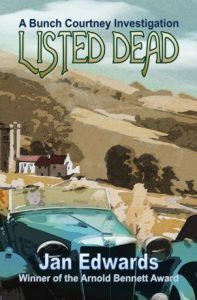
Listed Dead, Bunch Courtney Investigation #3, is set in November 1940. Following Claude Naysmith’s fatal car crash on the borders of the Courtney family’s estate on the Sussex Downs, Bunch Courtney can hardly avoid being drawn into events. When another corpse is found, with a list of names that includes Claude, Bunch and her cohort DCI William Wright throw their combined efforts into the investigation before any more of people wind up on the mortuary slab.
But fear not, I have not abandoned fantasy fiction. I have a story titled ‘The Devil’s Piss Pot’ appearing this autumn in The Mammoth Book of Folk Horror. And if the title of my story doesn’t intrigue you, I don’t know what will.
You can find more about my writing at https://janedwardsblog.wordpress.com/
Please Feel Free to Share:






April 15, 2020
A New Short Story In The Alchemy Press Book of Horrors 2
Strange Stories and Weird Tales…
I’m so thrilled to have a short story in the chilling new collection from The Alchemy Press which is launching on April 16th! Delighted to be in such excellent authorial company and to be edited by Peter Coleborn and Jan Edwards, with illustrations by Jim Pitts. Join the online launch 19.00 – 21.00 BST on Facebook on 16th April (there may even be a prize or two, I understand!) or check out The Alchemy Press Book of Horrors 2.
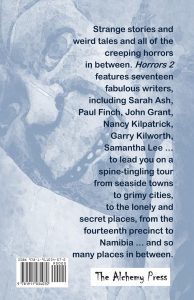
And the title of my story? I Left My Fair Homeland.
Please Feel Free to Share:






March 19, 2020
Want to Read the Artamon Fantasy Series? Or a Byzantine ghost story? Kindle has some great offers right now.
Kindle has some great offers on the Artamon books right now! Prisoner of Ironsea Tower, Children of the Serpent Gate and The Arkhel Conundrum!
For some mysterious reason, Amazon has called Prisoner of Ironsea Tower Book 4 of The Tears of Artamon. It’s Book 2! (I will endeavour to get them to change this mysterious glitch. Book 3 is Children of the Serpent Gate and Book 4 is The Arkhel Conundrum.)
And for those looking for something different, my historical LGBT novel Scent of Lilies set in the embers years of the Byzantium Empire (from Manifold Press) is also available as a very reasonably priced e-book on Kindle.
Please Feel Free to Share:









